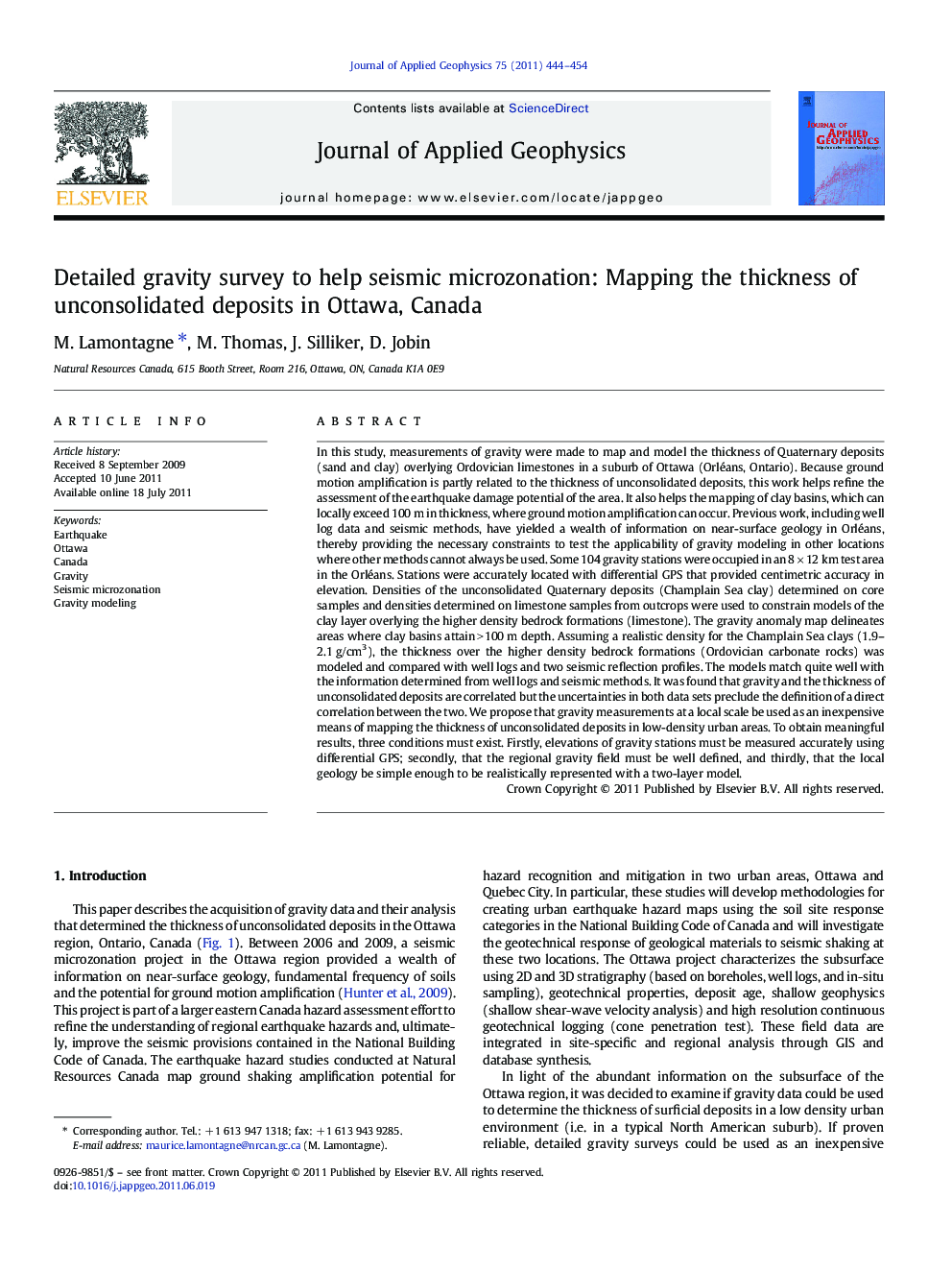| کد مقاله | کد نشریه | سال انتشار | مقاله انگلیسی | نسخه تمام متن |
|---|---|---|---|---|
| 4740584 | 1358593 | 2011 | 11 صفحه PDF | دانلود رایگان |

In this study, measurements of gravity were made to map and model the thickness of Quaternary deposits (sand and clay) overlying Ordovician limestones in a suburb of Ottawa (Orléans, Ontario). Because ground motion amplification is partly related to the thickness of unconsolidated deposits, this work helps refine the assessment of the earthquake damage potential of the area. It also helps the mapping of clay basins, which can locally exceed 100 m in thickness, where ground motion amplification can occur. Previous work, including well log data and seismic methods, have yielded a wealth of information on near-surface geology in Orléans, thereby providing the necessary constraints to test the applicability of gravity modeling in other locations where other methods cannot always be used. Some 104 gravity stations were occupied in an 8 × 12 km test area in the Orléans. Stations were accurately located with differential GPS that provided centimetric accuracy in elevation. Densities of the unconsolidated Quaternary deposits (Champlain Sea clay) determined on core samples and densities determined on limestone samples from outcrops were used to constrain models of the clay layer overlying the higher density bedrock formations (limestone). The gravity anomaly map delineates areas where clay basins attain > 100 m depth. Assuming a realistic density for the Champlain Sea clays (1.9–2.1 g/cm3), the thickness over the higher density bedrock formations (Ordovician carbonate rocks) was modeled and compared with well logs and two seismic reflection profiles. The models match quite well with the information determined from well logs and seismic methods. It was found that gravity and the thickness of unconsolidated deposits are correlated but the uncertainties in both data sets preclude the definition of a direct correlation between the two. We propose that gravity measurements at a local scale be used as an inexpensive means of mapping the thickness of unconsolidated deposits in low-density urban areas. To obtain meaningful results, three conditions must exist. Firstly, elevations of gravity stations must be measured accurately using differential GPS; secondly, that the regional gravity field must be well defined, and thirdly, that the local geology be simple enough to be realistically represented with a two-layer model.
► The thickness of Quaternary deposits is modeled using the local-scale gravity.
► The gravity anomaly map clay basins thicker than 100 m.
► Gravity and the thickness of deposits are loosely correlated.
► Differential GPS for elevation control optimizes results.
► Simple two-layer geology and regional gravity field give the best results.
Journal: Journal of Applied Geophysics - Volume 75, Issue 3, November 2011, Pages 444–454